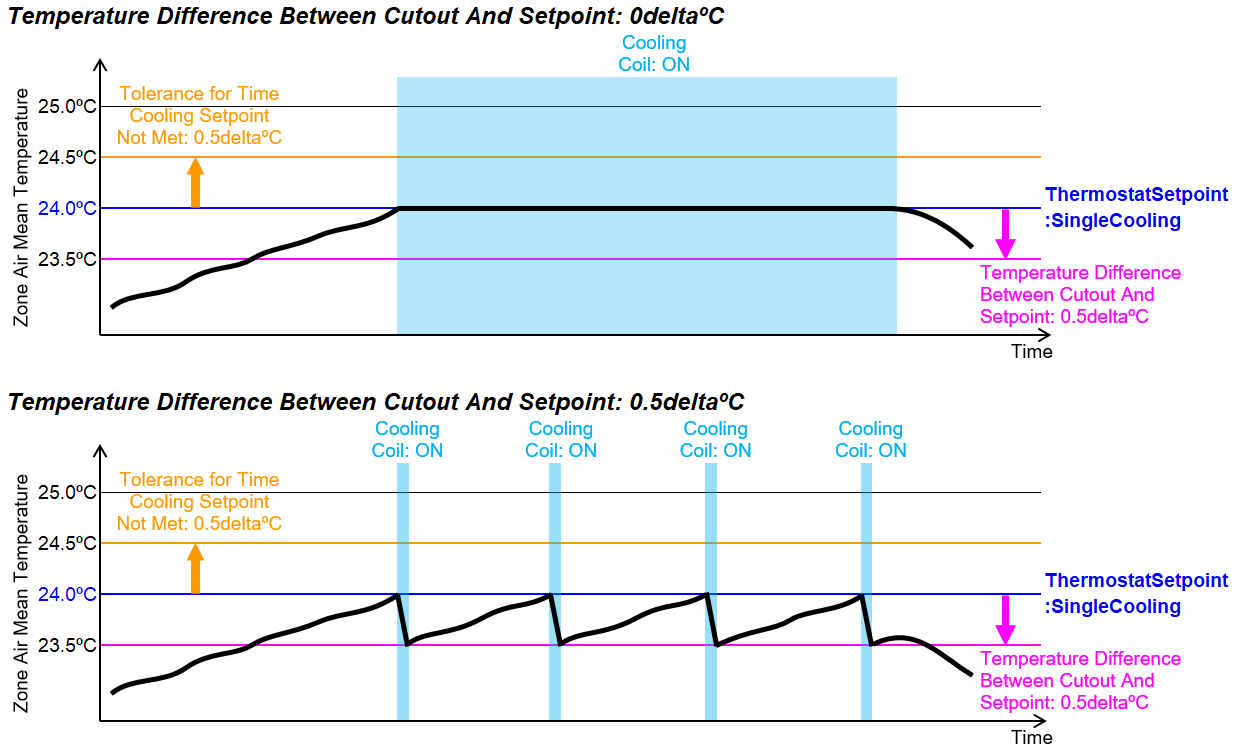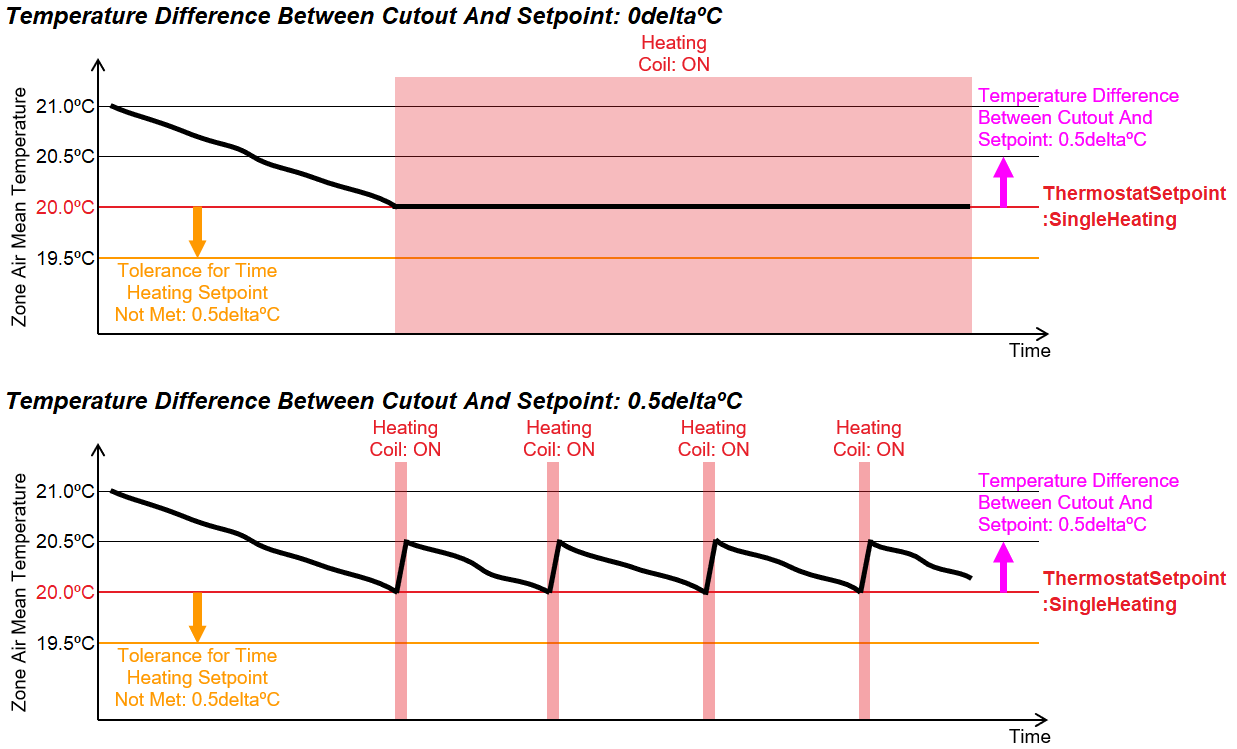How does "Temperature Difference Between Cutout And Setpoint" affect Unmet Hours?
For ZoneControl:Thermostat, I/O Reference warns against the use of Temperature Difference Between Cutout And Setpoint in as follows:
Note that this option should be used in caution. Following recommendations may be used to input the value of Temperature Difference Between Cutout And Setpoint:
1. The heating and cooling setpoints must be separated by at least 2 times the Temperature Difference Between Cutout And Setpoint or there will be a fatal error.
2. The thermostat setpoint not met hours are incorrect with this option.
3. This option will cause excess operation of heat pump system supplemental heating coils.
Could someone explain more about the recommendation No. 2 above? Why are Unmet Hours incorrect when we use Temperature Difference Between Cutout And Setpoint? How does Temperature Difference Between Cutout And Setpoint affect Unmet Hours? Does this mean that Temperature Difference Between Cutout And Setpoint cannot be used for ASHRAE90.1 Appendix G compliance because the Unmet Hours requirement (< 300hours) cannot be evaluated correctly?
In my experience, Unmet Hours decrease a bit and cooling/heating end use increases when I use Temperature Difference Between Cutout And Setpoint. It is because HVAC systems overcool/overheat zones. I have not found Unmet Hours to be unnaturally large or small with Temperature Difference Between Cutout And Setpoint.
Below is my understanding of how cooling/heating turns on/off and how indoor air temperature changes by Temperature Difference Between Cutout And Setpoint. "0deltaºC" means Temperature Difference Between Cutout And Setpoint is not used. I don't think Unmet Hours are incorrect with Temperature Difference Between Cutout And Setpoint if HVAC systems have sufficient cooling/heating capacity and the opration schedule is appropriate.







